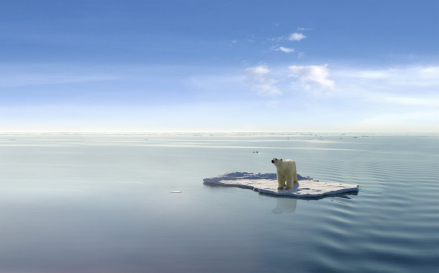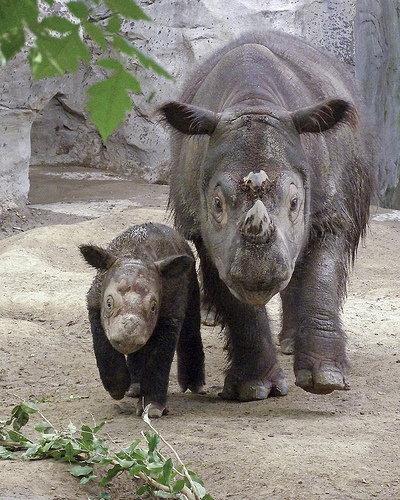Endangered Species Day
Today marks the seventh annual Endangered Species Day as an opportunity to learn more about endangered species and how to protect them. Many of the animals which are most threatened with extinction are so vulnerable due to climate change and habitat loss, while others are suffering after a man-made disaster like Deepwater Horizon. Humans are negatively affecting the natural world in unnatural ways and it is time to recognize steps we can take to prevent further harm.
Not counting those that are extinct in the wild, and those thought to be extinct, the following are some of the most vulnerable, most beautiful, most inspired species in the world.
Tigers. The tiger is a truly striking creature. A symbol of conservation around the world, these animals are at a critical juncture. All subspecies of tigers are endangered with the Sumatran and South China tigers at greater risk of extinction. Human interference is the primary cause of declining populations of all tigers: hunting, “medicinal” remedies, and habitat loss.
Polar Bear. The largest living land carnivore is one of the most significant canaries in the coal mine of climate change. They are not immediately close to extinction, however their threatened status is not symbolic. The true effects of climate change can only be predicted based on all the information we have available and what we know is that even minor changes will have an enormous impact on these awe-inspiring animals.
Leatherback Turtle. The greatest threat to the largest sea turtle is humanity. We kill them, we capture them, we pollute their homes, and we indirectly cause harm through climate change. Loss of habitat through beach erosion is important, but so too is the predicted increase of sand temperature, both due to climate change. As the sand temperature increases, it changes the sex of the hatchlings to favor females. In the long-term this could be a crucial blow to the species. Plastic is also an increasing threat to all ocean life, but when an animal is already critically endangered it presents a more significant problem.
Mountain Gorilla. The largest extant species of primate, famously studies by Dian Fossey, Poaching, habitat destruction, disease (some of which is newly caused by increased tourism), and continued armed conflict in Rwanda, Uganda and the Democratic Republic of Congo are the biggest threats for mountain gorillas. There are only about 700 mountain gorillas surviving in the wild.
Sumatran and Javan Rhinoceros. Both species of rhinoceroses look like prehistoric throwbacks and both are also critically endangered due to poaching, primarily for “medicinal” remedies, and habitat loss. The Javan and Sumatran rhino species’ populations are so depleted, while all attempts thus far to increase their numbers have failed, that experts are not certain there is hope for these rare mammals.
Sumatran Orangutan. There are two subspecies of orangutan, both endangered, but the Sumatran Orangutan is critically so. Humans have contributed to their endangered status by hunting for a very long time, driving the apes to smaller and smaller ranges. But more recently, and because of the small range, the increased loss of habitat due to logging, gold mining, and unsustainable palm oil plantations has reached the breaking point.
It is very clear what is causing the demise of these majestic animals, but we must not bow to the inevitable, we must continue on, and if not for them, for us. This is critical mass.
How You Can Help - 15 Ways To Stop Climate Change and Destruction of Wildlife Habitat
First, simply learn more about the species that are most endangered, as well as those in your area, and the reasons for their vulnerable status. There are plenty of ways individuals can help, but also recognize that we must put pressure on our leaders and we must support conservation organizations working to help stop extinction.
Beyond that…
- Drive less and with full tires when you do.
- Reduce, reuse, recycle.
- Avoid plastic.
- Shoot for zero-waste living.
- Reusable, not disposable.
- Consider the environmental impact of purchases: how and where the product was made, packaging, lifespan of product, and what happens to it once it reaches the end of its life.
- Adhere to Meatless Monday (or any day) at least once a week.
- Consider your food supply: how and where it is raised or grown, who are your farmers, and how it gets to you.
- Stop buying products with palm oil.
- Wash clothes and dishes when appliances are full, with cold water if available, and without heat dry.
- Unplug all appliances when not in use.
- Keep your thermostat higher in the summer and cooler in the winter.
- Plant trees and support organizations who do on a larger scale.
- Support companies who are leaders in the fight against climate change.
- Conserve water, especially hot water.
- Plant natives to lessen the need for water in your yard and garden.
- Incorporate permaculture principles into your life.
What are your thoughts on how we can protect endangered species?
Endangered Species Day: Tigers and Turtles and Bears! Oh My! is a post from: Almost All The Truth
Endangered Species Day: Tigers and Turtles and Bears! Oh My! is a post from: Almost All The Truth




























